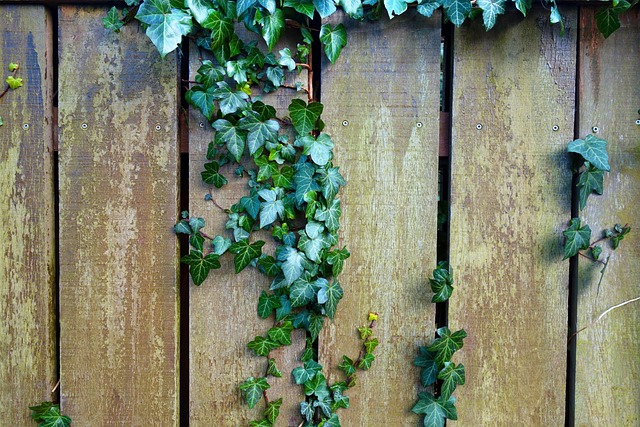In coastal regions, where harsh weather conditions and salty air pose unique challenges, selecting the right fencing material is paramount. This article explores durable wooden fencing as a robust solution for protecting properties along the coast. We delve into the specific considerations that arise when installing fences in these environments, including wood species selection, installation techniques, maintenance strategies, and aesthetic options. By understanding these aspects, homeowners and builders can create lasting and attractive barriers against the elements.
- Understanding Coastal Fencing Challenges
- Benefits of Durable Wooden Fencing
- Choosing the Right Wood Species
- Installation Considerations for Coastlines
- Maintenance Tips for Longevity
- Enhancing Coastal Aesthetics with Wood Fences
Understanding Coastal Fencing Challenges
Coastal areas present unique challenges when it comes to fencing due to their exposure to harsh weather conditions, including high winds, salt mist, and frequent rainfall. Traditional fencing materials often struggle to withstand these elements, leading to frequent repairs or replacements. The primary concern is selecting a durable material that can resist corrosion and decay caused by the salty sea air.
Wooden fencing, when chosen wisely, can be an excellent solution for coastal properties. Opting for treated or tropical hardwoods known for their natural resistance to moisture and pests offers a longer-lasting alternative. These woods, such as cedar or teak, have proven track records in withstanding the harsh coastal environment, ensuring that investments in fencing remain intact for years to come.
Benefits of Durable Wooden Fencing
Durable wooden fencing offers an array of advantages for coastal areas, where traditional materials might struggle against harsh weather conditions and saltwater exposure. One of its key benefits is aesthetics; wood provides a natural, appealing look that enhances outdoor spaces, blending seamlessly with coastal landscapes. Unlike other materials, wood can be stained or painted to match specific color schemes, allowing homeowners and businesses to customize their fencing to complement the local ambiance.
Moreover, durable wooden fences are an environmentally friendly option. Wood is a renewable resource, making it a sustainable choice for fence installation. This type of fencing also provides good privacy and security while allowing light penetration, ensuring that residents can enjoy their outdoor areas without complete isolation. Its longevity means less frequent replacement, reducing waste and construction site impact.
Choosing the Right Wood Species
When selecting wood for coastal fencing, understanding the local climate and environmental conditions is paramount. Salt air, moisture, and frequent storms can take a toll on any material, but certain tree species are better equipped to withstand these challenges. Hardwoods like redwood and cedar are renowned for their natural resistance to decay, insects, and weather changes, making them excellent choices for coastal areas.
Redwood, in particular, is highly durable and aesthetically pleasing, with a rich color that ages gracefully. Cedar, on the other hand, offers a range of natural oils that repel water and inhibit mold growth. Both woods are readily available and have a lower environmental impact than some alternative materials, ensuring not only sturdy but also eco-friendly fencing solutions for your coastal property.
Installation Considerations for Coastlines
When installing wooden fencing in coastal areas, several unique considerations come into play. First and foremost, the choice of wood is critical; durable species like cedar or treated timber are ideal to withstand the constant exposure to salt air and moisture. Proper drainage is another key factor; efficient water runoff prevents waterlogging, which can weaken the fence over time. The layout should also account for potential coastal conditions, such as strong winds, high tides, or even storms, ensuring a robust and secure installation.
Additionally, regular maintenance becomes essential to preserve the fence’s longevity. This includes routine cleaning to remove salt buildup and periodic re-treating to protect against rot and pests. Careful planning and execution, tailored to the coastal environment, are vital to ensure the fencing not only withstands but enhances the natural beauty of these areas without compromising durability.
Maintenance Tips for Longevity
Maintaining your wooden fence in coastal areas requires a few extra considerations to ensure its longevity. Regular cleaning is essential, especially removing salt spray and other marine debris that can accelerate wood degradation. Use a soft-bristled brush and mild detergent for washing, avoiding harsh chemicals that may damage the finish.
Inspections are crucial at least twice a year. Look for signs of rot, insect infestation, or weather damage. Promptly repair any issues to prevent further deterioration. Applying a fresh coat of protective paint or sealer annually will also shield the fence from moisture and UV rays, ensuring it remains robust against coastal conditions.
Enhancing Coastal Aesthetics with Wood Fences
Wooden fencing can beautifully enhance the coastal landscape, offering a natural and appealing aesthetic to homes and properties along the shore. Unlike other materials that might clash with the surrounding environment, wood seamlessly blends in, especially when chosen from locally sourced, durable varieties. The right fence design can frame ocean views, provide privacy without obstructing the natural light, and create a sense of tranquility, all while offering protection against coastal elements.
With proper treatment and maintenance, wooden fences can withstand salty air, strong winds, and even occasional exposure to moisture, making them an excellent long-term investment for coastal areas. Crafted with care, these fences not only protect properties but also contribute to the overall charm and character of coastal communities, creating a cohesive and inviting atmosphere for both residents and visitors alike.
